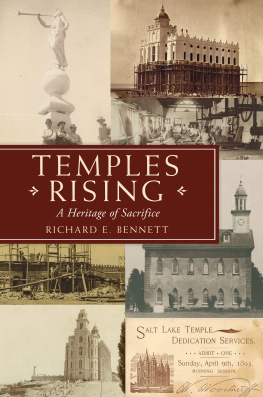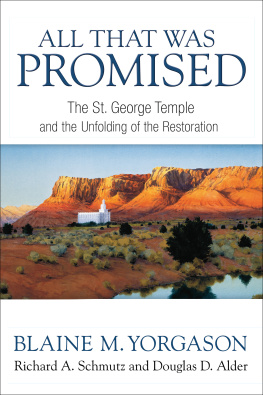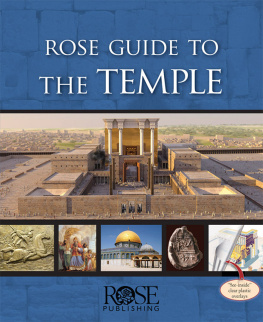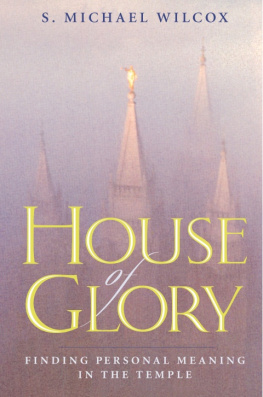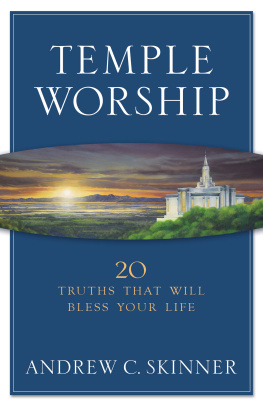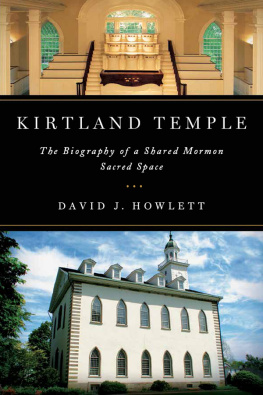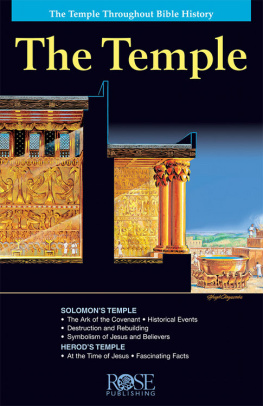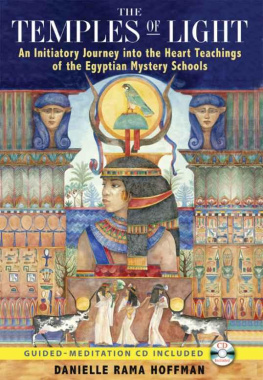Wilford Woodruff (18071898).
Contents
Acknowledgments
This book would not have been possible without the help and encouragement of many wonderful friends and associates. When Leonard J. Arrington was called as Church Historian in 1972, I became one of his research assistants. He introduced me to the world of manuscript and archival research at what was then called the Church Historians Office and instilled in me an insatiable desire to explore fearlessly and faithfully the history of The Church of Jesus Christ and the many remarkable life stories of the Latter-day Saints. Professor Marvin S. Hill of Brigham Young University taught me the necessary skills to conduct comprehensive, detailed, historical research.
More recently, scholars and administrators, archivists, and colleagues at the Church History Library, the L. Tom Perry Special Collections at the Harold B. Lee Library, and at Brigham Young University and elsewhere, not only encouraged my undertaking of this volume but also offered invaluable suggestions for improving it. In particular, I wish to thank Richard Turley Jr., Steven Harper, Reid Neilson, Keith Erikson, Brandon Metcalf, Kathryn Daynes, and Mark Staker. Others with long experience in temple history and temple administration gave constructive criticism and suggestions for improvement. And to the many staff members at the Church History Library I also give credit, especially reference librarians Anne Berryhill and Elise Reynolds who kindly offered me rich assistance in choosing the illustrations and images that grace this volume. Several BYU students have been of help along the way, especially Nick Valleta and Lisa Love-Snyder. I also wish to thank my son, Richard S. Bennett, who shares my love of Church history and who was particularly helpful with researching manuscript materials in the Church History Library.
I wish also to thank my employerBrigham Young Universityfor the blessed opportunity I have had over the past two decades to teach both undergraduate and graduate classes in Church History and the Doctrine and Covenants to the faithful youth of this rising generation. I owe much of my scholarship to in-depth, in-class gospel discussions with many excellent students. To the staff at Deseret Book, particularly product director Lisa Roper, I also express my appreciation. Lisa showed sincere interest in my research from the beginning and constantly encouraged me to work with Deseret Book to get this manuscript published. And where would this work be without the able assistance of a highly skilled editor, in this case, Leslie Cutler Stitt. No ship can reach harbor without such skilled pilots as Lisa and Leslie. Typographer Rachael Ward and graphic designer Shauna Gibby round out this team of Deseret Book professionals to whom I am indebted.
With a most generous grant provided me from the Frederick W. and Jolene Edmunds Rockwood Family Foundation, I was able to retain the services of some fine research assistants, one of whom in particular has been most faithful and helpful. For six years, Wendy Top, a devoted and lifelong student of Church history, a seasoned temple worker, and a remarkably well-organized, resourceful, and cheerful research assistant was with me almost every step of the way. Her work on the footnotes and with the charts and tables and so much more has been indispensable and is so deeply appreciated. Without her loyal and capable assistance, this work would still be on the drawing boards. Thanks, Wendy!
Above all, I thank my long-suffering wife, Patricia, who also enjoys studying our historical past. From day one of our marriage she has not only put up with my fascination with Church historyindeed, the other love of my lifebut has continually given me all the encouragement, time, and patient support necessary to complete this study. I owe her and all five of our now-grown children my enduring gratitude.
Richard E. Bennett
Introduction
We shall not only build a temple here [Salt Lake City] if we are successful, and are blessed and preserved, but we shall probably commence two or three more, and so on as fast as the work requires, for the express purpose of redeeming our dead. When I get a revelation that some of my progenitors lived and died without the blessings of the Gospel, or even hearing it preached... I will go and be baptized, confirmed, washed, and anointed, and go through all the ordinances and endowments for them, that their way may be open to the celestial kingdom.
So prophesied President Brigham Young concerning his vision of the rise of temples in these latter days.
Written primarily to the believing but inquiring member of The Church of Jesus Christ of Latter-day Saints, this study is set to tell the history of latter-day temples and the rise of temple consciousness among members of the Church in the nineteenth century. As we in the twenty-first century are witnessing the construction of temples throughout the world in an ever-hastening manner, this topic takes on greater relevance than ever before. Several studies through the years have examined the architecture, symbolism, and importance of temples. Few, however, have attempted to show the full range and depth of challenges temple work faced throughout the nineteenth century. The common denominator throughout will be the spirit of sacrifice and consecration that characterized the building of each early temple. And since Wilford Woodruff played such an important role, much of this work will follow the footsteps of this fourth President of the Church and will examine the rise of temples through his eyes.
Writing anything about so sacred a topic as temples can be fraught with difficulties. Without trespassing upon the sacred covenants and ordinances themselves, I will nevertheless attempt to assess what they meant to those involved. It is a natural, but often dangerous, inclination of many to interpret the past in the light of present convictions and institutional representations. And when it comes to the sacred topic of temples, the temptation is for many of us to believe that the birthday cake came right out of the oven, steaming hot and finished with icing and lighted candles all ready for the party, a religious fait accompli .
The truth is it did not work that way. The history of latter-day temple worship throughout the nineteenth century is, rather, a story of development, of line upon line, a price paid here and an enormous sacrifice made there, a gradual process of revelation, adaptation, and careful implementation, replete with stops and starts, misunderstandings, and varied interpretations. As John Taylor so aptly put it, We are called upon once in a while to take a new step in this great work. At one time it was polygamy, at another it was baptism for the dead, then it was building Temples, then certain endowments, then the sealing of our children to us, then certain promises made to ourselves, such as God made to Abraham in former days. Other divergent paths of the Restorationto borrow Community of Christ historian Steven Shieldss phrasehave also laid claim to varied interpretations of temple work, all of which are outside the scope of this work.

